
by nynasma | May 5, 2021 | BLOG
Arabic music, also known as Arab music, is the music of the Arab world, consisting of a wide range of musical styles and genres. Arabic countries have a diverse range of musical styles as well as linguistic dialects, with traditional music unique to each country and area. Takht (Arabic for “bed”) is the name given to the standard Arab ensemble. The ensemble’s composition varies, but it usually consists of the ‘oud, qanun, nay, kamanja, riq, and darbuka, which are all melodic instruments.
Male and female vocalists are welcome to join the group. The Takht ensemble uses quarter tones, in addition to whole and semi-tones. It gives it a distinctive and melodramatic appearance.
Here are the instruments in the traditional Arabic ensemble or Takht:
The Oud
The Oud is a short-neck pear-shaped stringed instrument in the Arabic ensemble with 11 strings grouped in six courses. This instrument has 5 or 7 courses with 10 or 13 strings in some of its variations.

The Ney
The Ney is a flute made of reed or cane with five or six holes for fingers and one hole for the thumb. It is the wind instrument of the Arabic ensemble or Takht.

The Qanun
The Qanun is known for its distinctive melodramatic sound in the Takht or Arabic ensemble. It quite often looks like a zither or harp and has a thin soundboard shaped like a trapezium.

The Riq
The Riq is an instrument of the Arabic ensemble. Riq has a wooden circular frame that is wrapped with goat or fish skin. The frame of this instrument is decorated with special wood, ivory or mother-of-pearl. The riq is similar to the tambourine.

The Kamanja
The Kamanja is a bowed string instrument of Iran that is played in the Takht using a variable tension bow. This instrument is included in UNESCO’s list of ‘Intangible Cultural Heritage’ List in 2017.
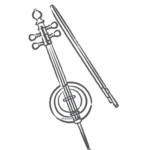
The Darbuka
The Darbuka is a type of drum that is known for its goblet-shaped body. The daburka requires the player to use quick, light-fingered strokes which are known for their quick rhythms. The daburka is played under the arm or sideways on the musician’s leg in the Takht and has a single head membranophone.

Nasma of NY would like to give a hearty shoutout to one of our students Angie Assal who started her business – Sound Of Mazzika. She runs the business of making beautiful jewellery with Middle Eastern Instruments. Make sure you check out her unmissable collection.
Want to learn Levantine Arabic? Check out Nasma Of NY’s Levantine Arabic, Made Easier podcast on iTunes, Android and Spotify.

by nynasma | Apr 30, 2021 | BLOG
Best Movies to Watch in the Levantine Arabic
Movies are a great way to learn any language. They not only teach you the language but they’re also a source of entertainment for the viewer. Watching movies can improve your vocabulary and boost confidence in speaking that language.
For a language learner, what is a better way to learn a language than watching some of the best top-of-the-world movies? Below are our top 10 picks.
- Caramel:
2007, 1 hour 6 minutes
Caramel is a feature film created by Nadine Labaki in Levantine Arabic. It was the director’s first feature film and it premiered at the 2007 Cannes Film Festival.
Caramel is a film about the lives of five Lebanese women – Layale, Nisrine, Rima, Jamale, and Rose. The story follows these five Lebanese women as they deal with issues like forbidden love, binding rituals, repressed sexuality, the struggle to embrace the normal process of ageing, and duty versus desire.
This Lebanese classic is available on Youtube and Tubi. It’s a great watch for someone wanting to learn Levantine Arabic.
- Ghadi:
2013, 1 hour 40 minutes
Ghadi is a Lebanese drama film directed by Amin Dora in Levantine Arabic. This movie was the original Lebanese movie selection at the 2015 Oscars for the Best Foreign Language Film. This movie is in the Levantine Arabic.
Ghadi revolves around a Lebanese man Leba and his wife Lara who are trying to have a son. Their firstborn and second-born are baby girls, much to the chagrin of his relatives, neighbours, and colleagues. Lara is expecting her third child, and they’re finally expecting a boy. The medical examinations, however, indicate that the boy may have special needs. The movie revolves around the dilemma of whether Ghadi will be a burden and how the family will tackle this situation.
This film is not only entertaining and charming, but it also exposes the nuances of Lebanon Arab culture. It’s available to watch on Amazon Prime.
- Capernaum:
2018, 2 hours 6 minutes
Capernaum is a Lebanese drama film directed by Nadine Labaki in Levantine Arabic and by far our favorite. The film debuted at the 2018 Cannes Film Festival and won the Jury Prize.
The story revolves around a boy named Zain, who has run away from his parents. He has committed a violent crime and has been sentenced to five years in jail. The boy sets out on a journey to sue his parents in protest of the life they have given him.
Capernaum is a smart, compassionate, and ultimately stirring picture of lives in the balance. It’s a highly advisable watch for someone keen on learning Levantine Arabic. The movie is available on Youtube for purchase and Google Play Movies.
- The Insult:
2017, 1 hour 53 minutes
Another great movie in the Levantine dialect is The Insult. A Lebanese legal drama film directed by Ziad Doueiri. This movie was selected as the official entry for the Best Foreign Language Film and was nominated for Oscars in 2017.
Tony George Hanna, a Lebanese Christian mechanic, and Yasser Salameh, a Palestinian foreman, are involved in a court case that causes political upheaval in an already unstable region.
This Lebanese movie gives a hard-hitting statement on modern Middle Eastern politics. The Insult is a perfect choice for a gripping and thought-provoking Levantine Arabic movie watch. It’s available on Amazon Prime, Youtube, and Google Play Movies. In this movie you will hear Tony speaking in the Lebanese dialect while Yasser speaks in the Palestinian dialect. A great way to hear both dialects!
- The Syrian Bride:
2004, 1 hour 37 minutes
The Syrian Bride is a Levantine Arabic film directed by Eran Riklis. This Lebanese film has garnered critical acclaim and has been nominated and won several notable awards.
The plot revolves around a Druze wedding and the difficulties that the village’s residents face as a result of the unresolved political situation. The plot of the film examines the Arab–Israeli conflict through the lens of a family separated by political boundaries, and how their lives are shattered by the harsh political realities of the region.
It is a must-watch for Levantine Arabic learners to gain a better understanding of the contemporary Arab-Israeli conflict.
- Where Do We Go Now?:
2011, 1 hour 15 minutes
‘Where Do We Go Now?’ is a Lebanese drama film directed by Nadine Labaki. This feature film premiered at the 2011 Cannes Film Festival. This is another wonderful movie to watch in the Levantine Arabic as well.
The story revolves around a Lebanese village where Christians and Muslims have coexisted peacefully, but as a result of slights and misunderstandings, animosities grow among the men. The villagers’ women devise a series of blundering schemes to stop sectarian conflict, none of which succeeds in slowing down the cycle of abuse. When tragedy hits, the women are compelled to make a deeply complex sacrifice in the name of reconciliation.
This Lebanese women-driven film is a must-watch for all Levantine Arabic learners out there. It’s available on Youtube and Vudu to watch.
- West Beirut:
1998, 1 hour 45 minutes
West Beirut is a 1998 Lebanese drama film directed by Ziad Doueiri. The film has gained critical acclaim and has received various awards.
West Beirut is a coming-of-age story about two Muslim teenagers who befriend a Christian girl and their adventures in a city split along religious lines amid a civil war. With school closed due to a bus attack, the trio has plenty of time to explore Beirut’s shifting environment and learn about all the various aspects of a time when tensions and disputes abound.
This is a great watch for the people who are interested in history and the Lebanese 1975 civil war. The movie is available to watch on Netflix.
- Heaven Without People:
2017, 1 hour 31 minutes
Heaven Without People is a feature-length film directed by Lucien Bourjeily. It is a Levantine Arabic film that has featured in the 14th Dubai International Film Festival and has won several awards.
The plot follows a large family that reunites for the first time in two years for Easter lunch. As they resolve an inevitable dispute that threatens to derail their reunion, tensions rise to the surface in unexpected ways. When each family member confronts their own political and moral hypocrisies and slowly unravels the bonds that bind them, the older and younger generations clash.
This Lebanese comedy is a good choice for someone who wants a light-hearted watch. The movie is available on Netflix.
- The Present:
2020, 24 minutes
The Present is a Levantine Arabic dialect short film directed by Farah Nabulsi. It was nominated for Oscars in the Best Live Action Short Film category in 2021.
The movie has a simple premise about a father and daughter attempting to buy a wedding anniversary present in the Israeli-occupied West Bank’s Palestinian enclaves.
This eye-opening art of a film captivates one’s heartstrings. For the Lebanese Arabic learner, this movie is an unmissable watch. It is available on Netflix to watch.
- Zozo:
2005, 1 hour 45 minutes
Zozo is a Swedish-Lebanese film directed by Josef Fares. It was one of the submissions to the Oscars under the Best Foreign Language Film category in the year 2006.
Zozo tells the story of a Lebanese boy, during the civil war, who gets separated from his family and ends up in Sweden.
This gripping Lebanese story about war, pain and loss is striking, to say the least. Zozo is streaming on Netflix.
If you are on a rush and on the go and looking to hear a podcast in the Levantine Arabic podcast, check out “Levantine Arabic, made easier” podcast. It’s available on iTunes, Android, and Spotify. Levantine Arabic, made easier podcast is ranking top 100 podcasts on iTunes. Levantine Arabic, Made Easier is a podcast designed for people who understand enough Arabic to want engaging content, the host Carol Haidar checks in throughout the story to point out important words in Arabic. Make sure to check the shows notes for TOP 20 vocabulary picks from each episode.
What are you waiting for? Hurry and watch these Lebanese classics to learn and improve your Levantine Arabic vocabulary now! Happy Watching and Learning!

by nynasma | Mar 26, 2021 | BLOG
So Many Choices! What Are the Best Languages to Learn?
There are over seven thousand languages spoken today. This is good news for the language-learning fanatic, who will never run out of new material with which to keep busy. But those of us with jobs, families, and hobbies must portion our free time carefully. Some languages are more popular than others, but there are no “best” languages to learn. Every learner must ask herself what she wants to get out of learning a new language, as the answer depends on the individual. For some, this is an easy question: they will move somewhere else and need to know the language, or they want to speak the language of their ancestors, or maybe they just like the sound of a particular language.
For others, choosing a language to learn can be a paralyzing question. The answer depends on much: what you want to accomplish, where you live now, where you want to live later, and much else besides. This blog post will look at the most popular languages and discuss why people choose to learn them.
A Few of the Most Popular Languages
If you want to learn a new language, then I commend you for that decision. Learning a new language—any language—will sharpen your mind and grant you a new skill. The list that follows discusses only some of the popular languages on Earth. The global use of a language might not be the best metric to decide what language you, yourself, should learn, but people who learn the following tongues have lots of company.
English
Starting the list is this no-brainer choice. While English does not have the highest population of first-language speakers, it swells its numbers with nearly a billion second-language speakers. The far-flung colonial efforts of Great Britain and the technological and economic superiority of the United States post–World War 2 put English in the forefront as the world entered the era of globalization. English became the language of international business and air travel, and it is so widespread that English travelers can make themselves understood just about anywhere.
Mandarin
Mandarin has everyone else beat in terms of native speakers, with nearly a billion speaking it as a first language. However, Mandarin is increasingly one of the languages people are flocking to for a second tongue, thanks to China’s bounding economy. An entrepreneur looking to expand his business internationally would do well to learn Mandarin, but beware! Mandarin is notoriously difficult for English speakers to grasp. For one, there is the Chinese writing system, which uses thousands of different symbols, as opposed to English’s 26 letters (although they don’t always correspond neatly to specific sounds). Another difficulty is the integral role tones play in Mandarin. Two words, spelled and pronounced identically but intoned differently, can have drastically different meanings. The scope for confusion and faux pas is enormous.
At least the grammar is simple: Mandarin learners won’t have to bother with verb conjugations and tenses, gendered nouns, and inflections (unlike Arabic, which is heavy on inflection).
Spanish
Much like English, the Spanish language owes much of its current popularity to colonial ambitions during the age of sail. Spanish is wildly popular; native Spanish speakers even outnumber native English speakers, though it is a less popular second-language choice as it doesn’t quite have English’s spread. That said, for people living in the United States, Spanish is one of the best languages to learn. About 35 million people in the United States speak Spanish; many learn the language in high school, and conscientious business people and tourists often learn Spanish before traveling to Mexico and the Spanish-speaking countries of South America.
There are many dialects of Spanish, but they are not as wildly different as the varieties of Arabic. Apart from some minor confusion caused by different vocabularies, two Spanish speakers will be able to hold a conversation no matter where they are from.
Arabic
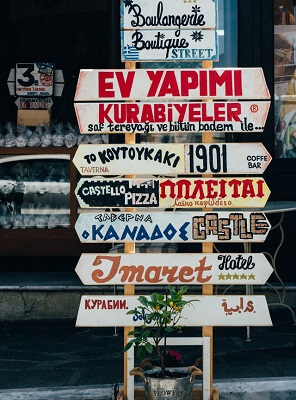 Arabic, across its many dialects, is the mother tongue of about 400 million people. It is the official language of more than twenty countries in the Middle East and North Africa. Additionally, Arabic is the liturgical language of the world’s 1.8 billion Muslims.
Arabic, across its many dialects, is the mother tongue of about 400 million people. It is the official language of more than twenty countries in the Middle East and North Africa. Additionally, Arabic is the liturgical language of the world’s 1.8 billion Muslims.
But the “officialness” of a language is not all that important. (After all, English isn’t the official language of the United States or the United Kingdom.) People speak with people, not with countries, and Arabic-speaking people are found all over the world. Pretty much any decent-sized city will have a significant cluster of Arabic-speaking people, adding their distinctive flavor to the local culture. If you happen to live in such a city, you won’t have to look far to find an Arabic-speaking neighbor or a grocery store adorned with Arabic text. This widespread diaspora makes Arabic one of the most popular languages for people looking for a new tongue.
People with entrepreneurial spirits are increasingly setting their sights on the Middle East. The United Arab Emirates is famous for its international business ventures, though the entire Middle East as a whole is growing its economy rapidly. A quick web search is enough to confirm this: there are plenty of agencies dedicated to helping businesses contact and market to the Middle East, and blog posts about Middle Eastern business customs abound. Naturally, with this development comes a profusion of Arabic language courses.
How you go about learning Arabic depends on what you intend to do. Unlike Spanish, some varieties of Arabic are mutually unintelligible. An Arabic speaker from Morocco would have great difficulty speaking to someone from Saudi Arabia. For this reason, business-focused people are likely to study Modern Standard Arabic (MSA), which is widely understood throughout the Arabic-speaking world, allowing you to make contacts throughout the Middle East and North Africa. However, MSA is nobody’s native tongue. It is used by the media and as a common tongue by people who speak very different Arabic dialects.
For those looking to get to know the people and the culture of the Middle East, we recommend learning one of the natural dialects of Arabic. At Nasma, we believe that people learn to speak a culture as well as a language, which is why we focus on teaching conversational Levantine Arabic. Check out our podcasts, our YouTube channel, or our Instagram page for free Arabic tips. Then, if you’re feeling brave, you can go visit that little grocery store with the Arabic writing and greet the cashier with “marhaba.” After all, the best way to learn Arabic is by talking with someone.
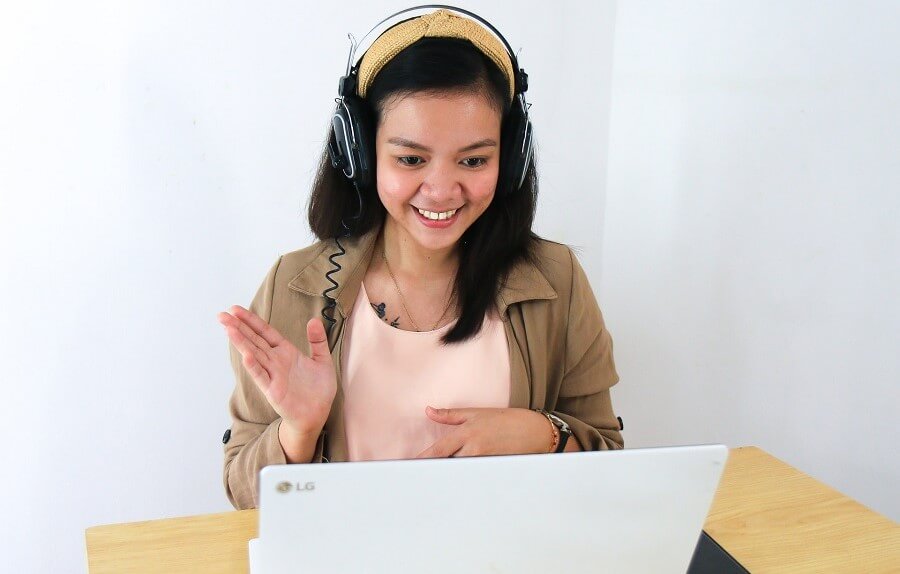
by nynasma | Feb 24, 2021 | BLOG
Can You Learn Arabic for Free?
If you’re reading this, you are interested in learning the Arabic language. I commend you for this decision! Stick with it, and before long, you’ll be able to count yourself among the hundreds of millions of Arabic speakers and better able to appreciate the culture of the Middle East. Before you get to that point, though, you’ll need to decide how to go about learning the language. There are lots of fantastic Arabic schools, but they also charge fantastic prices for admission. How do you know which one is right for you? It would be awful if the course isn’t working for you but you’re still on the hook for three months of tuition. How far can you get if you want to learn Arabic for free?
Lucky for you, there are lots of free ways to learn Arabic. I encourage you to look at the many free options available to you. That way, you can figure out if you’re willing to study Arabic long-term before you whip out your credit card and start scheduling lessons.
You’re probably already aware of some of the free options available: for example, DuoLingo is a household name thanks to its free, gamified language instruction. Many online schools offer free trials, letting prospective students test the waters before laying down cash. This is true here at Nasma: you can sign up for a 14-day free trial of our Levantine masterclass right now if you wish, but we also have several other options for learning Arabic online. Read on and see what we have to offer to those wanting to learn Arabic online.
Word of the Day on Instagram
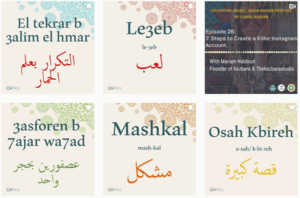 When you are learning a new language—any language, really, but especially one with an unfamiliar alphabet—it can be daunting. Think of how easy it is to express yourself in your native tongue: you never have to ransack your memory for the word book or Monday or commute (notwithstanding those odd tip-of-your-tongue moments we all experience). When trying out a new language, you push your brain hard to recall the unfamiliar words, and then you have to shape your mouth in a new way to utter the strange sounds … and look at the many many many different things and experiences in our world that have their own words! How can you possibly learn these thousands of new words?
When you are learning a new language—any language, really, but especially one with an unfamiliar alphabet—it can be daunting. Think of how easy it is to express yourself in your native tongue: you never have to ransack your memory for the word book or Monday or commute (notwithstanding those odd tip-of-your-tongue moments we all experience). When trying out a new language, you push your brain hard to recall the unfamiliar words, and then you have to shape your mouth in a new way to utter the strange sounds … and look at the many many many different things and experiences in our world that have their own words! How can you possibly learn these thousands of new words?
It’s okay. A journey begins with a single step, and you can learn a new vocabulary one step at a time. With our Daily Word on Instagram, you get one word each day, with a Romanized pronunciation guide to help you learn. And with each Arabic word you learn, you form another stitch in the grand tapestry of the language, bringing you one tiny step closer to fluency.
Weekly Tips on YouTube
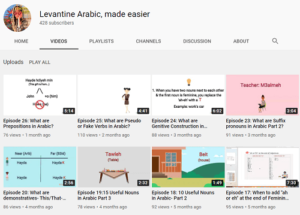 Each Thursday, we upload a short instructional video on YouTube. The first videos we uploaded were aimed at helping absolute beginners learn Levantine Arabic, but our more recent videos cover slightly more advanced topics. Start with Episode 1 (how to say “hello” in Arabic) or Episode 3 (how to say “how are you”) and work your way up to Episode 24 (genitive constructions) and Episode 25 (pseudo verbs in Arabic). Videos come with Romanized pronunciation guides if you’re more of a visual learner, but be sure to check out Episode 4 to learn what sounds the numbers 2, 3, and 7 make.
Each Thursday, we upload a short instructional video on YouTube. The first videos we uploaded were aimed at helping absolute beginners learn Levantine Arabic, but our more recent videos cover slightly more advanced topics. Start with Episode 1 (how to say “hello” in Arabic) or Episode 3 (how to say “how are you”) and work your way up to Episode 24 (genitive constructions) and Episode 25 (pseudo verbs in Arabic). Videos come with Romanized pronunciation guides if you’re more of a visual learner, but be sure to check out Episode 4 to learn what sounds the numbers 2, 3, and 7 make.
Each video ranges in length from thirty seconds to seven and a half minutes, so it doesn’t take long to brush up on your Arabic grammar.
Podcast Tuesdays
Learners who have already achieved some competence in Levantine Arabic might be interested in Nasma’s weekly podcast. Join our founder, Carol Haidar, and her friends and students as they share bilingual stories on a wide variety of topics. Carol covers a wide ground in her podcast: if you’re interested in learning more about the Arabic language, try Episode 14 (10 Lebanese Proverbs) or Episode 15 (10 Useful/Funny Arabic Phrases). Those interested in Arab cultures might be interested in Episode 3 (Arab Weddings) or Episode 18 (Family & Family Members). And you can’t truly appreciate a culture if you ignore the food, so look at Episode 2 (Lebanese Breakfast) and Episode 5 (all about finding the taste of home away from home).
It’s a wonderfully broad slice of topics of conversation, and we’re sure that one podcast or another will interest you.
Levantine Masterclass
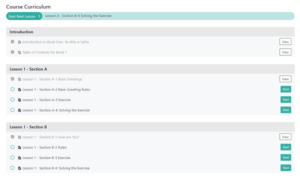 We save for last the best online Arabic course you’ll find anywhere: Nasma’s Levantine masterclass. Carol designed our curriculum after more than a decade of teaching Arabic as a second language, and it has been adapted and optimized to fit the needs of online learners.
We save for last the best online Arabic course you’ll find anywhere: Nasma’s Levantine masterclass. Carol designed our curriculum after more than a decade of teaching Arabic as a second language, and it has been adapted and optimized to fit the needs of online learners.
Four videos each week provide most of the instruction.
- Video 1: Explanation of the week’s lesson.
- Video 2: Review of important rules.
- Video 3: Explanation of the week’s homework.
- Video 4: Homework solutions.
Three Arabic textbooks, also written by Carol, are the primary study guides for the course. But videos and textbooks are not the most responsive way to learn, so can join our weekly Zoom meetings to practice Arabic with your classmates and ask Carol whatever questions you may have. These meetings are recorded so you can review them at your leisure. Can’t wait for the weekly meeting? You’ll also have access to a private Facebook group where Carol will answer your questions promptly.
The course starts at $9.97 a month, with our most premium option being $24.97 a month. But this blog post is about how you can learn Arabic for free, so we must mention that we are offering a 14-day free trial of our Levantine Masterclass. You can sign up without risk, and for two weeks, experience all that Nasma has to offer.
There you have it. Whet your appetite for learning with our word of the day on Instagram, watch a YouTube video, and sample a podcast or two. If you like what you read/watch/hear, visit our Levantine Masterclass webpage, and consider signing up for a free trial.
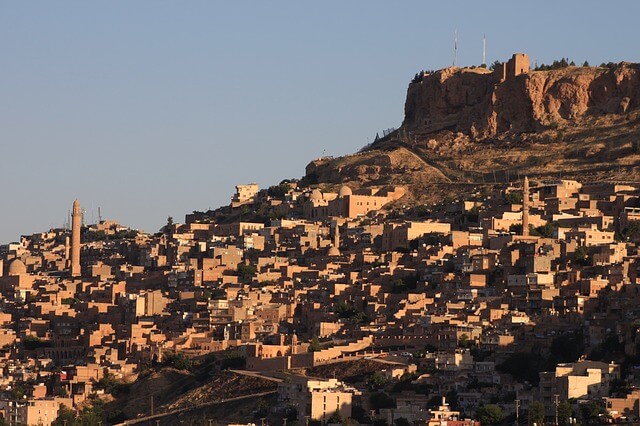
by nynasma | Jan 23, 2021 | BLOG
Why You Should Learn Arabic? Why Not Something Else?
Arabic is the fourth-most-spoken language in the world, with about 400 million speakers. If numbers are all that matter, why learn Arabic when Chinese or Hindi has many millions more speakers?
Raw numbers are not the whole game. We associate Arabic with the Middle East and North Africa, but people and the languages they speak are not tied down to any geographic area. Over the centuries, millions of people from the Arab world have left their home countries to seek better opportunities and to flee conflict. These people, naturally, brought their culture and language with them, and it is these people who have made Arabic the world language it is today. This blog post will provide a brief glimpse into just a few places outside the Arab world where Arabic is frequently spoken, showing you that the language is all around us.
North America
Detroit
 The first people of Arab descent to immigrate to the United States were Lebanese and Syrian Christians fleeing turmoil in the Ottoman empire in the late 19th century. However, Arab immigration to Michigan began in earnest as the auto industry burgeoned. Excellent wages and a promise of a more peaceful life attracted people from all over the world. Later, in the seventies, the civil war in Lebanon resulted in another flock of immigrants, attracted to Detroit by the already large Arab community.
The first people of Arab descent to immigrate to the United States were Lebanese and Syrian Christians fleeing turmoil in the Ottoman empire in the late 19th century. However, Arab immigration to Michigan began in earnest as the auto industry burgeoned. Excellent wages and a promise of a more peaceful life attracted people from all over the world. Later, in the seventies, the civil war in Lebanon resulted in another flock of immigrants, attracted to Detroit by the already large Arab community.
Aside from Spanish, Arabic is the most spoken foreign language in Michigan. About 200,000 people of Arab descent live in the Detroit metropolitan area, and more than half continue to speak Arabic at home. Small businesses and stores with mixed English and Arabic signs are a common sight, and The Arab American, a bilingual newspaper, circulates to tens of thousands.
Montréal
 The largest French city outside of France is also home to a diverse collection of Arab-Canadian citizens and immigrants. Understandably, many come from the former French colonies of North Africa, but Montréal is also home to 40% of Canada’s Syrian-origin people and substantial numbers of Lebanese people.
The largest French city outside of France is also home to a diverse collection of Arab-Canadian citizens and immigrants. Understandably, many come from the former French colonies of North Africa, but Montréal is also home to 40% of Canada’s Syrian-origin people and substantial numbers of Lebanese people.
A large portion of these people are recent immigrants, so the Arabic language is alive and well in Montréal. Grocery stores with Arabic text advertising their goods are a common sight in many of Montréal’s boroughs. And tune in to 1450 AM for Middle East Radio, the only Arabic radio station in all of Canada.
Asia
Mardin
 This ancient city in southeastern Turkey has been a hub of cultural exchange for millennia. A look at its architecture shows influence from numerous peoples: Assyrian, Byzantine, Armenian, Syriac, Kurdish, and Arab, to name just a few. Mardin is so richly adorned with historical architecture that the Turkish government promotes it as an open-air museum. Many beautiful and ancient churches and mosques, as well as the enchanting landscape, make Mardin a destination for adventurous tourists.
This ancient city in southeastern Turkey has been a hub of cultural exchange for millennia. A look at its architecture shows influence from numerous peoples: Assyrian, Byzantine, Armenian, Syriac, Kurdish, and Arab, to name just a few. Mardin is so richly adorned with historical architecture that the Turkish government promotes it as an open-air museum. Many beautiful and ancient churches and mosques, as well as the enchanting landscape, make Mardin a destination for adventurous tourists.
Despite being a part of Turkey, Turkish is only the third-most spoken language in Mardin. Kurdish is the commonest language, with Arabic not far behind. Most of the Arabs of Mardin are from a group known as Mhallami, who live in southeastern Turkey and the coast of Lebanon. Visitors to Mardin might initially struggle to make sense of the dialect of Arabic Mhallami use, as they have borrowed much from their Turkish and Kurdish neighbors, but it is not fundamentally different from Levantine Arabic, making conversation possible.
Mindanao
Arab people have visited and traded with the people of the Philippines for thousands of years. But the Arabic language did not make a foothold until the fourteenth century, when Muslim missionaries migrated throughout southeast Asia, spreading their faith and the Arabic language with it. Those traders and missionaries were particularly successful on Mindanao, the large, southern island of the Philippines.
About 2% of the population of the Philippines—2.2 million people—claim Arab ancestry, and between 5 and 10 million follow Islam. But you would be mistaken if you thought that Arabic was used only liturgically. The constitution of the Philippines includes a section encouraging the voluntary learning and use of Arabic. (This is no small honor, as there are more than a hundred languages used in the Philippines.) To this end, many schools in Mindanao include MSA in their curricula, and many learn the Arabic alphabet at least, to better understand many shops and signs which use that alphabet.
The language is especially useful for the many Filipino citizens—2.5 million—who work in the Middle East, remitting their wages to families back home. “Why learn Arabic?” has a compelling economic answer for these people; naturally, they can secure better jobs and live more comfortably if they know some Arabic before moving to the Middle East. Going in the other direction, many Middle Eastern entrepreneurs have sought business opportunities in the Philippines, continuing a history of trade that has existed for centuries.
Europe
Paris
 Aside from French people, Arabs are the largest ethnic group in Paris, with people from Algeria, Tunisia, and the other former French colonies of North Africa making up the bulk of immigrants, though there is a significant Lebanese diaspora as well. (Incidentally, there are no official population numbers for ethnicities in France, as the government does not collect ethnic statistics.)
Aside from French people, Arabs are the largest ethnic group in Paris, with people from Algeria, Tunisia, and the other former French colonies of North Africa making up the bulk of immigrants, though there is a significant Lebanese diaspora as well. (Incidentally, there are no official population numbers for ethnicities in France, as the government does not collect ethnic statistics.)
Most Arab immigration to France happened quite recently, starting in the 1960s. Due to the relative youthfulness of the Arab-French population, the Arabic language is quite strong in Paris. Travel agencies use Arabic script in metro advertisements; exhibitions of Arabic music and art are frequent; some schools teach elective Arabic; and the state-owned television network, France 24, has an Arabic channel.
Stockholm
 For most of history, Finnish was Sweden’s most common foreign language. However, the number of Arabic speakers in Sweden has doubled in the last decade, shooting that language into the #2 spot.
For most of history, Finnish was Sweden’s most common foreign language. However, the number of Arabic speakers in Sweden has doubled in the last decade, shooting that language into the #2 spot.
Arabic is now a part of Arabic daily life in Stockholm. Radio Sweden has maintained an Arabic channel since 2013, and 2017 saw the first Arabic book fair. Shortly before the COVID-19 shutdown, crowds flocked to Midnight Sun, a stage play performed in Arabic with Swedish subtitles. People can book digital medical checkups with Arabic-speaking doctors.
As in France, a precise number of Arabic speakers is impossible to establish in Sweden, but informal estimates suggest there are as many as 200,000. What is certain is that the Arabic-speaking community is lively in Stockholm, making a strong impact on entertainment and services.
This list is, of course, incomplete. But almost every city in the world has some Arabic-speaking citizens, truly making it a world language. Maybe you want to make a connection with a new neighbor, or better understand a museum or cultural exhibit, or just understand what mysterious spices they put in little bottles at the charming, ethnic grocery store down the street. Let us help you learn Arabic online. You won’t have to go far to practice.

by nynasma | Jan 23, 2021 | BLOG
If you’ve asked yourself this question, you’ve probably spent some time trawling the Internet, sorting through all the options for learning Arabic. And there are dozens of choices: how are you supposed to choose what’s right for you? In this blog post, we’ll look at some of the options you’ll encounter in your quest to find the best online Arabic course. You’ll learn how each of these courses is unique, how they are structured, and their pros and cons.
This is a venerable school in the field of online Arabic education. Launched in 1997, Arab Academy has helped thousands of individuals learn Arabic and have collaborated with various international schools and corporations to encourage conversation and trade with Arab neighbors and businesses. Students can choose to learn Modern Standard Arabic, Egyptian Arabic, or Islamic Arabic. And if you happen to live in Cairo, there are immersion programs you can join. Classes for children and teens are available as well.
Students will benefit from Arab Academy’s decades of experience. Their courses are highly structured and can teach you no matter your skill level. Absolute beginners are welcome, and dedicated students will be pleased to know that their courses meet several certifications, including for GCSEs and International Baccalaureate. Instruction includes one-on-one online lessons with an expert Arabic teacher, so students can expect to become fluent in conversation fairly quickly.
However, you will have to pay dearly for Arab Academy’s expertise. Courses start around $69 a month if you sign up for their semi-annual package, and goes up to $99 a month if you want to study month by month. It’s costly in time, too. Their Modern Standard Arabic (MSA) program involves ten courses, with each taking about 80 hours of study, so be prepared to spend a lot of time studying. However, they offer a free lesson so you can see if Arab Academy is suitable for you.
Duolingo is a household name for its huge variety of languages, so taking a peek at their Arabic option is a no-brainer. It’s easy to see the appeal: it’s free! Just sign up on your phone or computer, and off you go. Their lessons are short and quick, and their famous game-like teaching style makes it fun to learn and practice.
But be aware of Duolingo’s limitations before you take the plunge. First of all, they offer only MSA. This is fine for a general overview of Arabic, but by not learning a dialect of Arabic, you’ll be limiting yourself conversationally and missing out on a lot of the culture that makes learning Arabic so rewarding. And of course, not having an instructor or other students to practice talking with is far from ideal.
Additionally, Duolingo lacks information on how the Arabic language works. You won’t learn much about how grammar and spelling work in Arabic. In particular, I found their overview of the Arabic alphabet to be inadequate. Verdict: if you want to learn a little Arabic without spending a dime, Duolingo is a fun way to do so, but if you’re serious about learning Arabic, you need a course with an instructor to provide real, human feedback.
ArabicOnline has an interesting history. The European Union funded its startup to encourage people from all linguistic backgrounds to learn Arabic. Since their start in 2009, they have partnered with corporations and governments to bridge cultural gaps and help thousands learn about Arabic history and customs as well as the language.
ArabicOnline teaches only MSA, which is too bad, but their courses cover every skill level and focus on bridging cultural gaps. Students can expect a dose of Arabic history and culture with their grammar and vocabulary. Furthermore, ArabicOnline meets the requirements of the Common European Framework of Reference for Languages. Graduates receive neat certification badges to show off on their CVs.
Prices are not too steep, at around $99 a year. There are lots of free resources on their website, and you can expect their courses to meet the latest pedagogical standards. However, their website is light on details on what to expect. There appear to be no instructors: lessons are delivered through flash cards, audio files, programs, and the like. There is no mention of one-on-one or group instruction, or any options to practice with other students. You should not expect your conversational skills to develop fully in such an environment.
Why choose to study Arabic with Nasma? Here are some of the things that separate us from the other options.
First, Nasma specializes in teaching Levantine Arabic. MSA is fine to learn if you intend to read newspapers or watch newscasts, but it does not prepare you well for conversation. To truly understand a language, and the culture behind that language, you must be able to converse in it. Levantine Arabic is the dialect of Lebanon, Jordan, Syria, and Palestine, but is widely understood throughout the Arab world. To that end, Levantine Arabic is a great dialect to learn for people who intend to make a connection with Arabic speakers.
Second, Nasma’s dedication to personal instruction. I pride myself on being always available to my students. If something doesn’t make sense to you, there are many ways to get the answer you need. There are weekly Q&A sessions when all the students can ask their questions and get their answers right away. If you can’t wait that long, I can answer any questions on our private Facebook group or by email, sometimes even within an hour. I greatly enjoy building a relationship with my students, so I encourage them all to message me with any questions they have. If a student is having a tough time, I’ll make additional videos to help them (and later students who have the same problem).
And finally, there’s our tried and tested curriculum. I designed our curriculum after many years of teaching Arabic online and in person. I also wrote the Arabic textbooks used in our courses, so I have a personal stake in their quality. But curricula should not be set in stone, and it is my job to adjust to meet my students’ goals and needs.
Our Levantine masterclass starts at $9.97 a month. Our premium option, at $24.97 a month, includes numerous perks to help you learn. If you’re still unsure, we are offering a 14-day free trial so you can test the waters. Or you can check out our Instagram page or YouTube channel for free Arabic tips.
So, Is There a “Best” Online Arabic Course?
This list is just a small sampling of online Arabic resources; there are plenty of other resources for learning Arabic online, for free and otherwise. You have to weigh the pros and cons yourself to find what’s right for you. Duolingo is great if you don’t want to spend money; Arab Academy is great for their detailed, thorough instruction; ArabicOnline is great if for those who like teaching themselves. And of course, Nasma offers personalized instruction in the Levantine dialect, which is not an option in the other entries on this list. You have to choose the best online Arabic course that will fit your needs, but we hope you’ll visit the rest of our website and see what Nasma has to give you.










 Arabic, across its many dialects, is the mother tongue of about 400 million people. It is the official language of more than twenty countries in the Middle East and North Africa. Additionally, Arabic is the liturgical language of the world’s 1.8 billion Muslims.
Arabic, across its many dialects, is the mother tongue of about 400 million people. It is the official language of more than twenty countries in the Middle East and North Africa. Additionally, Arabic is the liturgical language of the world’s 1.8 billion Muslims.
 When you are learning a new language—any language, really, but especially one with an unfamiliar alphabet—it can be daunting. Think of how easy it is to express yourself in your native tongue: you never have to ransack your memory for the word book or Monday or commute (notwithstanding those odd tip-of-your-tongue moments we all experience). When trying out a new language, you push your brain hard to recall the unfamiliar words, and then you have to shape your mouth in a new way to utter the strange sounds … and look at the many many many different things and experiences in our world that have their own words! How can you possibly learn these thousands of new words?
When you are learning a new language—any language, really, but especially one with an unfamiliar alphabet—it can be daunting. Think of how easy it is to express yourself in your native tongue: you never have to ransack your memory for the word book or Monday or commute (notwithstanding those odd tip-of-your-tongue moments we all experience). When trying out a new language, you push your brain hard to recall the unfamiliar words, and then you have to shape your mouth in a new way to utter the strange sounds … and look at the many many many different things and experiences in our world that have their own words! How can you possibly learn these thousands of new words? Each Thursday, we upload a short instructional video on YouTube. The first videos we uploaded were aimed at helping absolute beginners
Each Thursday, we upload a short instructional video on YouTube. The first videos we uploaded were aimed at helping absolute beginners  We save for last the
We save for last the 
 The first people of Arab descent to immigrate to the United States were Lebanese and Syrian Christians fleeing turmoil in the Ottoman empire in the late 19th century. However, Arab immigration to Michigan began in earnest as the auto industry burgeoned. Excellent wages and a promise of a more peaceful life attracted people from all over the world. Later, in the seventies, the civil war in Lebanon resulted in another flock of immigrants, attracted to Detroit by the already large Arab community.
The first people of Arab descent to immigrate to the United States were Lebanese and Syrian Christians fleeing turmoil in the Ottoman empire in the late 19th century. However, Arab immigration to Michigan began in earnest as the auto industry burgeoned. Excellent wages and a promise of a more peaceful life attracted people from all over the world. Later, in the seventies, the civil war in Lebanon resulted in another flock of immigrants, attracted to Detroit by the already large Arab community. The largest French city outside of France is also home to a diverse collection of Arab-Canadian citizens and immigrants. Understandably, many come from the former French colonies of North Africa, but Montréal is also home to 40% of Canada’s Syrian-origin people and substantial numbers of Lebanese people.
The largest French city outside of France is also home to a diverse collection of Arab-Canadian citizens and immigrants. Understandably, many come from the former French colonies of North Africa, but Montréal is also home to 40% of Canada’s Syrian-origin people and substantial numbers of Lebanese people. This ancient city in southeastern Turkey has been a hub of cultural exchange for millennia. A look at its architecture shows influence from numerous peoples: Assyrian, Byzantine, Armenian, Syriac, Kurdish, and Arab, to name just a few. Mardin is so richly adorned with historical architecture that the Turkish government promotes it as an open-air museum. Many beautiful and ancient churches and mosques, as well as the enchanting landscape, make Mardin a destination for adventurous tourists.
This ancient city in southeastern Turkey has been a hub of cultural exchange for millennia. A look at its architecture shows influence from numerous peoples: Assyrian, Byzantine, Armenian, Syriac, Kurdish, and Arab, to name just a few. Mardin is so richly adorned with historical architecture that the Turkish government promotes it as an open-air museum. Many beautiful and ancient churches and mosques, as well as the enchanting landscape, make Mardin a destination for adventurous tourists. Aside from French people, Arabs are the largest ethnic group in Paris, with people from Algeria, Tunisia, and the other former French colonies of North Africa making up the bulk of immigrants, though there is a significant Lebanese diaspora as well. (Incidentally, there are no official population numbers for ethnicities in France, as the government does not collect ethnic statistics.)
Aside from French people, Arabs are the largest ethnic group in Paris, with people from Algeria, Tunisia, and the other former French colonies of North Africa making up the bulk of immigrants, though there is a significant Lebanese diaspora as well. (Incidentally, there are no official population numbers for ethnicities in France, as the government does not collect ethnic statistics.) For most of history, Finnish was Sweden’s most common foreign language. However, the number of Arabic speakers in Sweden has doubled in the last decade, shooting that language into the #2 spot.
For most of history, Finnish was Sweden’s most common foreign language. However, the number of Arabic speakers in Sweden has doubled in the last decade, shooting that language into the #2 spot.